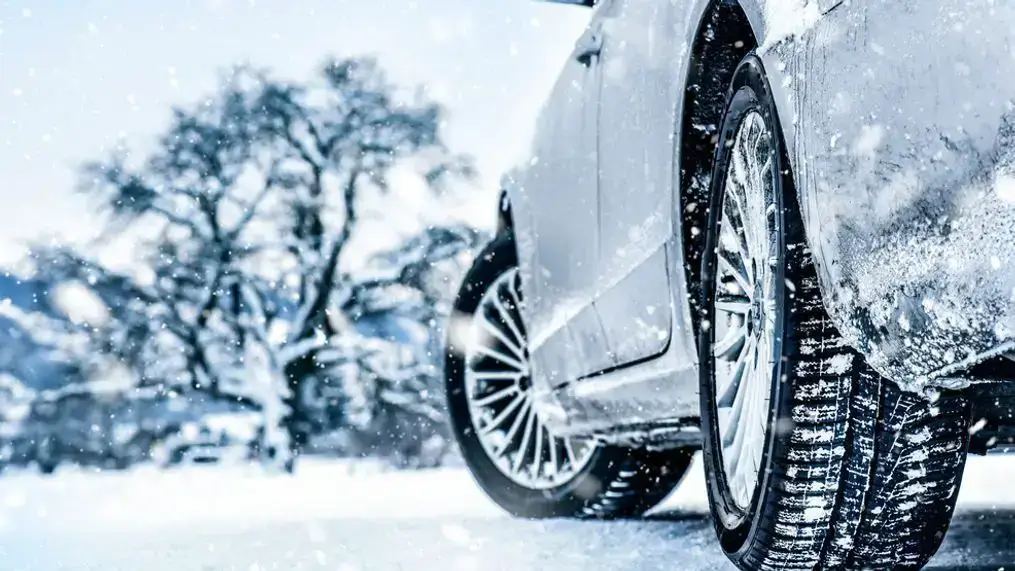We’re letting you know that this post contains sponsored links which Your Savvy Purse receives compensation for, which may impact their order of appearance.
As the cold weather sets in and the first snowflakes start to fall, it’s a clear signal that winter driving is upon us. Whether you live in a snowy region or simply experience the occasional winter storm, ensuring your car is ready for the harsher conditions is essential for your safety and peace of mind. Snow, ice, and freezing temperatures can turn even a short drive into a challenge if your car isn’t properly prepared.
Here’s your ultimate checklist for getting your car winter-ready:
1. Check Your Tires
Your tires are your first line of defense against winter roads, so making sure they’re in top shape is crucial.
- Tire Tread: Check the tread depth. The deeper the tread, the better your tires can grip snowy and icy surfaces. If the tread is worn down, it’s time for a replacement.
- Winter Tires: If you live in an area where snow and ice are common, consider investing in a set of winter tires. They’re specifically designed for cold temperatures and provide better traction on slippery roads.
- Tire Pressure: Cold weather causes air to contract, so tire pressure can drop. Make sure your tires are inflated to the recommended pressure to avoid poor handling or reduced fuel efficiency.
2. Inspect Your Battery
Cold temperatures can drain your battery faster, and the last thing you want is to be stranded with a dead battery in the middle of a snowstorm.
- Battery Health: Get your battery tested to make sure it’s in good condition. Most auto parts stores offer free battery testing.
- Corrosion Check: Look for any corrosion around the battery terminals. If you see any, clean it off with a mixture of baking soda and water or buy a battery cleaner.
3. Replace Wiper Blades & Add Winter-Grade Washer Fluid
Snow, slush, and ice can quickly obscure your visibility, so it’s important that your windshield wipers are up to the task.
- Wiper Blades: Replace worn-out wiper blades with ones designed for winter weather. These are more durable and are better suited for snow and ice removal.
- Winter Washer Fluid: Fill up your windshield washer reservoir with winter-grade fluid. This fluid has a lower freezing point and can help keep your windshield clear even in freezing temperatures.
4. Check Fluids & Oil
Keeping your car’s fluids at optimal levels is always important, but in winter, it’s even more critical.
- Antifreeze: Check the antifreeze (coolant) level and ensure it’s the right mixture of antifreeze and water (usually 50/50). This will prevent your engine from freezing.
- Oil: Cold weather can cause thicker oil to move more slowly, which can make it harder for your engine to start. Consider switching to a lower-viscosity oil for easier starts during the winter months.
- Brake Fluid: Make sure your brake fluid is topped off, and your brakes are functioning properly. Cold weather can cause condensation in the brake system, which can lead to reduced braking efficiency.
5. Ensure Your Heater & Defroster Are Working
There’s nothing worse than having to drive in the cold with a malfunctioning heater or defroster.
- Heater Check: Ensure your vehicle’s heater blows warm air to keep you comfortable and safe during your commute.
- Defroster Functionality: The defroster is crucial for preventing foggy or iced-over windshields. Make sure it’s working properly, both front and rear.
6. Keep an Emergency Kit
While you can do everything possible to prevent a breakdown, it’s always wise to be prepared for the unexpected.
Here’s what you should pack in your winter emergency kit:
- Blankets or Extra Warm Clothing: Stay warm if you’re stranded for an extended period.
- Jumper Cables: Cold weather can cause battery issues, so have jumper cables on hand in case you need a boost.
- Snow Chains or Traction Mats: If you live in an area with heavy snowfall or icy roads, snow chains can help improve traction.
- Flashlight & Extra Batteries: Keep a flashlight in your car, especially in case you’re stuck in the dark.
- First Aid Kit: Always be prepared for the unexpected with a basic first aid kit.
- Non-perishable Snacks & Water: In case you’re stuck for a long time, having food and drink on hand could be a lifesaver.
7. Clear Snow & Ice from Your Car
It’s illegal in many areas to drive with snow or ice on your car’s roof, windows, or lights, and for good reason. Snow or ice can fly off your car and cause accidents, or obstruct your visibility while driving.
- Take the Time: Before driving, clear snow off your roof, hood, windshield, headlights, and taillights. This will ensure better visibility and prevent snow from falling onto other drivers.
- Use a Good Ice Scraper: Invest in a sturdy ice scraper and a snow brush to make it easier to remove ice and snow. A de-icing solution for your locks and door seals can also help prevent them from freezing.
8. Check the Exhaust System
A blocked exhaust can lead to dangerous carbon monoxide poisoning, especially if you’re stuck in snow. Ensure your exhaust system is clear of snow and ice buildup, and have it inspected for any leaks or damage.
9. Drive Smart in Winter Conditions
Finally, no matter how prepared your car is, your driving habits matter too.
- Slow Down: Snow and ice reduce traction, so always reduce your speed when driving in winter weather.
- Increase Following Distance: Leave plenty of room between you and the vehicle in front of you. Stopping distances are much longer in snow and ice.
- Use Caution on Bridges & Overpasses: These areas freeze faster than regular roads, so approach them with extra caution.
Conclusion
Preparing your car for winter isn’t just about convenience; it’s about safety. Taking a little time to check these essential components can make all the difference when winter weather hits. From ensuring your tires are up to snuff to packing an emergency kit, these steps will help you stay safe, comfortable, and confident on the road this season. So, before the next snowstorm rolls in, make sure your car is ready to handle whatever winter throws its way!



